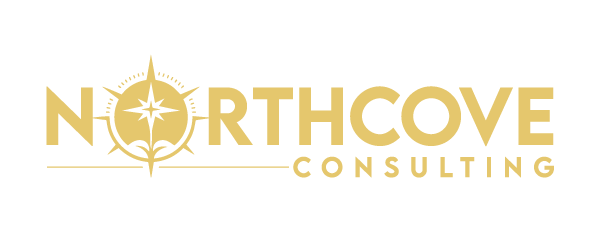
Identifying and Closing Skill Gaps in the Workplace with Workforce Data
Every thriving workplace has a story, people growing, challenges emerging, and progress unfolding day by day. One of the most urgent stories unfolding today is skill gaps in the workplace. These are the spaces between what employees know and what they need to know. When left unattended, they can slow projects, erode morale, and limit a company’s potential. But with smart workforce data in hand, we can not only spot these gaps but close them effectively.
In this blog, we’ll explore the idea of skill gap in the workplace from a hands‑on, deeply human perspective. I’ll walk you through practical ways leaders and HR teams can bring people and data together to build strength. You’ll see: this is about real humans, not abstract metrics.
Why closing skill gaps in the workplace matters
- Better performance day to day: When employees have exactly the skills they need, they deliver with confidence.
- Higher retention: People stay when they feel supported and growing.
- Adaptability: With rapid change, being nimble is vital. Closing skill gaps in the workplace lets organizations shift gears quickly.
Step 1: Identifying skill gaps in the workplace
This journey begins with clarity. Here’s how to start:
- Workforce skills assessment
Gather data from surveys, tests, manager reviews, and self‑assessments. Ask: what can they do now? What do they need to do next? - Employee skills assessment
Involve employees directly. Have them rate their confidence in key tasks. This signals honesty and personal ownership. - Talent gap analysis
Cross-reference roles and aspirations. If a team needs project managers or data analysts in six months, map what’s missing now. - Skills gap assessment
Compare current performance metrics with future goals. Identify which specific skills are missing. - Identifying skills gaps
Bring managers and team members together to talk through the data. Local knowledge can reveal issues a spreadsheet might miss.
By this point, you’ll have identified real, concrete workforce skills gap issues, just facts grounded in lived experience and day-to-day performance. You’re not relying on vague assumptions or outdated job descriptions anymore. You’re looking at data informed by people’s actual capabilities, current challenges, and future goals.
This clarity is powerful. It gives leaders the confidence to act, employees the clarity to grow, and the entire organization a shared understanding of where the gaps are and what needs to happen next. It’s the moment when “we think there’s a problem” turns into “we know exactly where to focus.”
Step 2: Digging deeper with workforce data
Once the gaps are on the table, let the data help you see patterns:
- Which teams have repeated gaps?
- Is the issue experience, training deficiency, or something else?
- Where do we see emerging needs? New tools, processes, or markets?
You’re not just identifying a skill gaps in the workplace problem, you’re peeling back the layers to understand why those gaps exist in the first place. Maybe it’s outdated training. Maybe roles have evolved faster than job descriptions. Or maybe your top performers are overloaded, leaving others without guidance.
Whatever the reason, using real workforce data means you’re diagnosing. And that shift in mindset changes everything. Instead of treating symptoms with generic solutions, you’re solving the root issues with precision, empathy, and strategy. That’s how you build a workplace that’s not just reactive, but ready.
Step 3: Prioritize and design solutions
Now it’s time to act with intention. Use the data to decide:
- What skills to build first: focus on mission‑critical gaps.
- Who needs support most urgently: high‑impact roles or lagging teams?
- What training format makes sense: mentoring, online learning, workshops, or shadowing?
You might also bring in Strategic Rewards Planning or a Sales Compensation Strategy and Design to reward team members who develop and apply new skills. With smart compensation tied to growth, you signal that learning is core to success.
Step 4: Launch and monitor progress
Kick off pilot programs, mentoring circles, or certification pathways. Use compensation benchmarking tools if you intend to offer monetary rewards tied to skill development.
Track progress by:
- Post‑training assessments
- Manager feedback
- On‑the‑job performance improvements
This workforce skills assessment process isn’t just a one-time pulse check. It’s a living system that gives you real, ongoing visibility into whether the skills gap in the workplace is actually closing. It lets you see beyond surface-level training reports and into the heart of growth: Are people applying what they’ve learned? Are teams moving faster? Are performance issues decreasing?
By regularly revisiting the data, gathering feedback, and tracking outcomes, you’re able to course-correct before small gaps become bigger problems. It turns skill development into a continuous feedback loop, one that’s grounded in real results, not assumptions. And that’s where real progress lives.
Step 5: Continuously evolve
Skill needs shift as work changes. To stay ahead:
- Repeat gap analysis quarterly or biannually.
- Let employees re‑rate themselves after learning.
- Adjust Executive Compensation or other incentives if leadership wants to model a learning culture.
Closing the skills gap in the workplace is not a one‑off project. It’s a living process.
Example of a Skill Gap Roadmap
Step | Description | Tools / Data Used | Who Involved |
1 | Skills assessment | Surveys, self-ratings, and manager reviews | HR, employees, line managers |
2 | Skills assessment | Performance metrics vs. required competencies | HR analysts, operations leads |
3 | Design interventions | Training, coaching, and compensation incentives | Learning & development, rewards team |
4 | Launch pilot programs | Training attendance, skills tests | Program leads, learners |
5 | Monitor and adjust | Post-training assessment, progress reviews | Managers, HR, compensation analysts |
Bringing in broader expertise
Workforce data alone is powerful, but when combined with trusted insights, it’s transformative. That is where a consulting partner like Northcove Consulting can help amplify results, blending domain expertise, compensation design, and proven implementation playbooks.
It’s not just about reading charts and dashboards. It’s about interpreting what they mean in the real world, for real people. A partner like this doesn’t just hand you data; they help you ask the right questions: Why are these gaps happening? Where do we begin? What’s realistic with your budget, team bandwidth, and future vision? And how do we make sure this isn’t a one-time effort, but a long-term strategy?
In short, what Northcove does best is connect the dots between data, people, and outcomes. They help companies stop spinning their wheels and start moving forward, with confidence, clarity, and a smarter approach to closing the skill gaps that hold teams back.
Strong E‑E‑A‑T Means Building Real Authority
- Experience: Walk through case studies of teams who doubled output after closing key skill gaps in the workplace.
- Expertise: Involve learning professionals, compensation analysts, and business leaders.
- Authority: Cite standards, certification bodies, and industry best practices.
- Trust: Use transparent data, invite employee involvement, and celebrate tangible results.
Closing reflections
Bringing real human momentum to bridging skill gaps in the workplace is one of the most meaningful investments an organization can make. It’s about people growing and thriving. From a thoughtful employee skills assessment and skills assessment, to targeted training, strategic compensation design, and continuous adjustment. It’s a systematic, empathetic, and deeply human journey.
When you give employees clear paths to develop, you win loyalty, agility, and performance. You build a workplace where learning is expected, opportunities are visible, and nobody is left behind. Over time, closing that workforce skills gap becomes less of a project and more of a culture, where everyone shows up ready to learn, contribute, and grow.
That’s the promise. That’s the power of truly identifying and closing skill gaps in the workplace.
Want help designing smarter development plans or evaluating your workforce? Reach out to us today.
Email: [email protected]
Phone: (877) 595-3087
Frequently Ask Questions
What is a workforce skills gap assessment?
It’s the process of comparing what skills employees currently have with what is needed for success, and pinpointing deficiencies to address.
How often should organizations do gap analysis?
Typically, every 6 to 12 months, or sooner when business direction shifts rapidly.
How can Rewards Planning support closing skill gaps?
By linking compensation, bonuses, or recognition to employees who develop and apply new skills in their roles.
Are compensation benchmarking tools necessary?
They help you align new incentives with market standards, making sure you’re competitive, fair, and strategic.
What’s the difference between skills gap assessment and skills assessment?
Skills gap assessment is the analytic comparison of current vs. needed skills; skills assessment is the data‑gathering step that fuels that analysis.
Related Posts
The Top 7 Benefits of Effective Workforce Planning Every HR Leader Should Know
The Top 7 Benefits of Effective Workforce Planning Every HR Leader Should Know Most conversations…
Identifying and Closing Skill Gaps in the Workplace with Workforce Data
Identifying and Closing Skill Gaps in the Workplace with Workforce Data Every thriving workplace has…
Internal Compensation Audit: Step-by-Step Guide with Audit Checklist for Internal Audit
Internal Compensation Audit: Step-by-Step Guide with Audit Checklist for Internal Audit An effective HR management…
How to Conduct a Pay Equity Audit and Why It Matters
How to Conduct a Pay Equity Audit and Why It Matters A pay equity audit…






